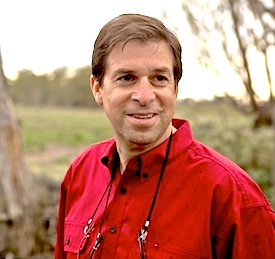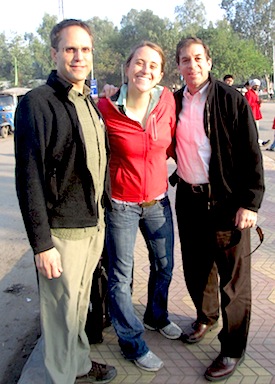
Welcome to Mode Shift, a blog that describes the collision between the operating principles of the 20th century and the disruptive market and calamitous ecological trends of the 21st. ModeShift chronicles how far mankind is being stretched by an era-transforming transition that is reshaping every aspect of life on the planet. ModeShift is mindful that Earth itself is forcing this new reckoning with floods, droughts, storms, earthquakes, and plagues. In few places have economic systems or governments responded with the adjustments in operating systems that will make the transition safer and drive a new age of prosperity that sees ecological and economic values as equal priorities.
I’m intent on applying to Mode Shift’s reporting and commentary 40 years of accumulated knowledge and experience in writing for The New York Times, the Los Angeles Times, ProPublica, Mongabay, Energy News Network, Mother Jones, Politico, China Dialogue, Fin24.com, Circle of Blue and other prominent news organizations. My interests are technology, government, business, transportation, agriculture, natural resources, and the environment. This blog, in short, is about evolution and is grounded in the wealth of reporting I’ve done from the frontlines on six continents.
Background
My work has been defined by the ability to discover vital trends in energy, science, the environment, and economics, elevate them to national attention, and influence the course of events. In the early 1980s, as a young investigative reporter based in South Carolina, I uncovered a scientific fraud at a Chicago product safety testing laboratory. My articles led to new farm chemical safety regulations and the withdrawal of hundreds of toxic chemicals from the American market.

Later in the decade, as a national correspondent for the New York Times, I uncovered the decrepit and unsafe conditions in the secret 12-state network of American nuclear weapons production plants. As a result of these articles, the operation of the government-owned weapons industry became a signature issue in the 1988 presidential election, and helped to drive the government decision to spend hundreds of billions of dollars to retire weapons production at most plants and open a new era of environmental cleanup.
In the early 1990s, while serving as the chief environmental correspondent at the Times, I penetrated the expensive scientific complexities of the nation’s hazardous waste cleanup laws. Dozens of articles, and a much-discussed series on environmental safety, made the powerful case that the stringent cleanup standards, requiring toxic waste sites to be restored to near pristine condition, were inordinately expensive but they often did not lower health risks. In fact, in many cases, less rigorous standards improved public health by reducing, for instance, the number of truckloads of contaminated soil shipped across state lines. Less rigorous standards also reduced the costs of cleanup, which had reached $40 million an acre in many cities. My articles helped propel the enactment of the nation’s brownfield laws, which made it possible for builders to redevelop old industrial sites and were instrumental in spurring the urban renaissance that has occurred in the U.S.
As founder and director of the Michigan Land Use Institute later in the 1990s and through much of the first decade of the 21st century I was among a small group of journalists who were the first to explore and explain to a national audience the value of Smart Growth as an economic development strategy. Pioneered by Maryland Governor Parris Glendening, and embraced by planners and business groups, Smart Growth focused on expanding public transit, building walkable streets, parks, and affordable housing, and protecting natural resources. In developing these civic assets, cities discovered they could slow suburban sprawl and attract new businesses, jobs, and residents to urban neighborhoods. My articles, speaking engagements, and national radio and television appearances attracted significant attention and helped Smart Growth become the design standards for cities and suburbs in the United States and around the world.
In 2008, I became senior editor of Circle of Blue, an online news group covering global water issues, and started to report from the front lines of the intensifying global confrontation between rising demand for energy and food in a world with diminishing reserves of fresh water.

I developed Circle of Blue’ internationally prominent Global Choke Point project, which has taken me and my colleagues to Australia’s drying Murray-Darling Basin, the coal-producing deserts of China’s Yellow River Valley, India’s wheat and rice basket in Punjab, Qatar’s mammoth Persian Gulf desalination plants, Mongolia’s mineral-rich and water scarce South Gobi Desert, South Africa’s Wild Coast and desert Karoo, and United Nations climate conferences in New York, Copenhagen, Barcelona, and Tianjin. My work on water shortages in China’ coal sector prompted the Chinese Central Government to warn about the impending barrier to development in its latest five-year plan, and to propose solutions. In 2014 the U.S. and China agreed to limit their carbon emissions. The U.S.-China climate agreement includes six provisions. Two of them focused on the confrontation between rising energy demand and declining freshwater reserves. The agreement also was the diplomatic breakthrough that led to the Paris Climate Accord in December 2015.
And I’ve shown in online multi-media reports for Circle of Blue, and in exclusive articles for The New York Times, that the places where the energy-water-food trend vectors collide are reshaping the Earth’s environment, reordering national priorities, and deeply affecting national economies, including our own in the United States. I’ve reported from the shale oil and gas fields of North Dakota and the Middle Atlantic states. And I’m the first journalist in the United States to report on how energy and crop production trends overseas are dramatically influencing the economies of America’s Rust Belt states. In the last two years I’ve produced a series of exclusive and widely-read articles for the Times business pages on job growth and redevelopment in the six states of the Ohio River Valley, and the economic revival of the major riverfront cities.
My work has been recognized with numerous awards. Among them are two George Polk Awards for national and environmental reporting. In 2012, the Rockefeller Foundation recognized Global Choke Point and Circle of Blue with its $100,000 Rockefeller Centennial Innovation Award.
Prior to September 2007, I spent more than 12 years with the Michigan Land Use Institute, the statewide research, communications, and policy organization that I founded in 1995 and directed until 2000. I later served as editor, director of program development, and deputy director. The Institute, with 21 staff members working out of its headquarters in Traverse City and four regional offices, steadily built the case that economic prosperity in Michigan and every other state is closely tied to treating land, neighborhoods, and natural resources more sensitively and intelligently.
Original journalism and effective dissemination was at the center of the Michigan Land Use Institute’s credibility and influence. Under my guidance, the organization developed a nationally prominent independent online news desk that communicated its ideas in articles, commentary, special reports, multi-media storytelling, and on several Web sites, including the organization’s main site, www.mlui.org, that attracted nearly 200,000 visitors a month.
Prior to founding the Institute, I spent 10 years as a national correspondent with the New York Times, where I continue as a special correspondent contributing articles on land use, transportation, energy, agriculture, business, and technology. For most of that perioid, 1985 to 1995, I was based in the Times’ Washington bureau.
White Plains, New York is where I was born and raised, and where I learned to commit my time and career to advancing the basic principle that what’s good for the environment also is good for the economy. On the first Earth Day, April 22, 1970, I organized several of my junior high school friends to join me in dragging tires and old appliances out of the Bronx River, an event chronicled in the lead story the next day in the New York Times.
I graduated from Haverford College with a degree in American studies and write from northern Michigan, where I’ve lived since 1993.
To contact me for speaking opportunities: keithhschneider@gmail.com, or 231-920-0745.
Bravo, Keith Schneider.
Thanks Marcia. Good to hear from you. Keith
Kudos on your magnificent investigative reporting, Keith!
Yes, ditto to Jane’s comment above. Difficult to read Keith’s commentary without learning, without a better understanding as to what’s really going on & why!
Keith,
Thank you so very much for your ongoing super-persistent, pertinent & refreshing investigative reporting!
Perhaps any day now the long awaited “tipping point” will arrive
& your insights can penetrate the Wall of Worry
churned out by climate-change-denier’s
deadly Grip-On-Power.
Keep it up! : )
Great work, mate! Keep it up.
Keith,
This looks interesting. Will look deeper into things in the coming days and weeks. I saw Benzonia MI was mentioned on the site. My wife and I go up to that area occasionally.
Don Knepp
We need to move State of Michigan and other states to stop cutting grasses and wildflowers in rest areas and Federal Highways. Saving billions of dollars and saving wildlife! Example: Monarch Butterfly migration from Michigan to Mexico!
I want the government to leave a migration path of food for Monarch Butterfly and wildflowers for bees , and birds! We have lost over 1,000 bird species in Michigan alone! What more losses do we have to take till President Biden and others hear ower cries for God’s gift of wildlife and this planet? We need to plant trees to save the wildlife and planet! One full grown Oak tree can drink 150 +200 gal. of water an hour on hot day! This is God’s suptick pump free to to stop flooding!
Most Excellent Keith. Thank you and keep up the great work!
Happiest of the New Year!
Tony Suhy
Oak Park and Honor Mi
Thank you for these thoughts. Appreciate it.